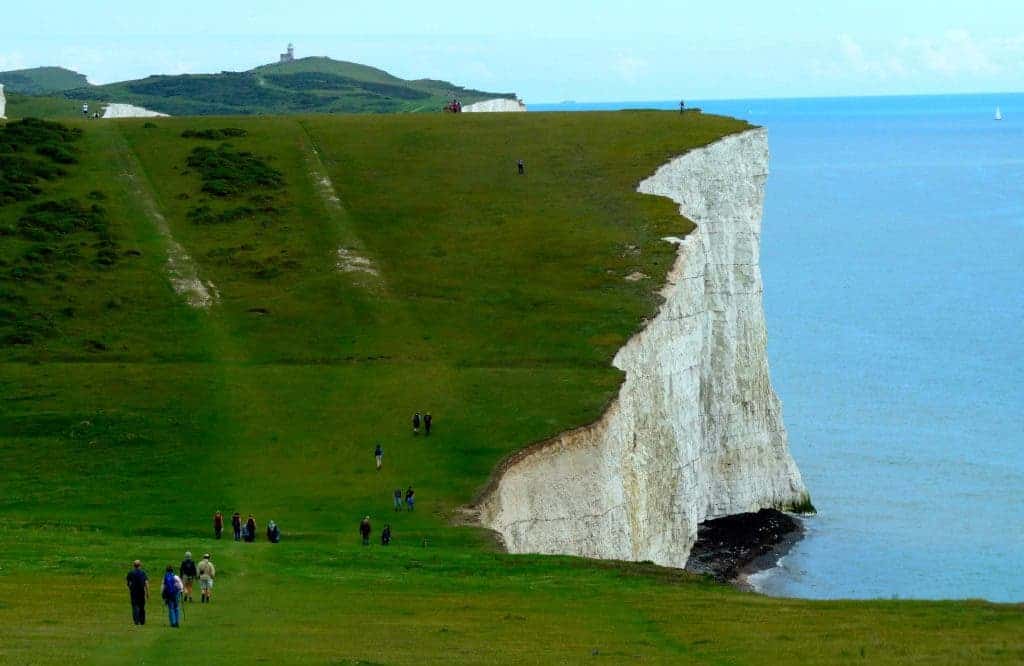
The Seven Sisters are a series of chalk cliffs by the English Channel, in Sussex (doh!). In case you didn’t know, chalk is actually a porous sedimentary rock, a form of limestone composed of the mineral calcite forming in somewhat deep underwater conditions from the gradual accumulation of minute calcite plates (coccoliths) shed from micro-organisms called coccolithophores.

The southern and south-eastern coast of the UK is known for spectacular chalk formations, and the Seven Sisters are an excellent example. The geology if east-Sussex, of which the sisters are a part of, is defined by a large anticline, the Weald–Artois anticline, a 60 kilometres (37 mi) wide and 100 kilometres (62 mi) long fold within which caused the arching up of the chalk into a broad dome.
Of course, in order for chalk to form there, it means that the coast was actually well submerged under water.



